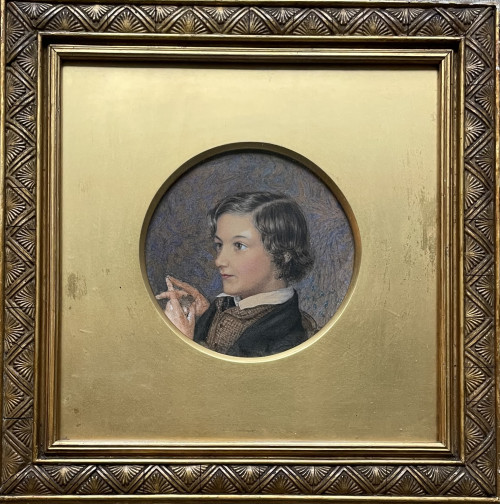- HOME
-
- View All Items
- New Arrivals
- Featured Items
- Artists
-
- View All
- Contemporary
- Birmingham School
- Cotswold Group
- Landscape
- Urban Townscape
- Abstract
- Animals/Birds
- Arts & Crafts
- British Impressionist
- Botanical
- Design/Industrial
- Fantasy/Fairy Subjects
- Female Artists
- Figurative
- Historical
- Illustration/Cartoon
- Marine
- Military/War Artist
- Modern British
- Pre-raphaelite/ Romantic/ Aesthetic
- Nude
- Portrait
- Prints
- Scottish
- Sculpture
- Sporting
- Still Life
- Theatrical
- Interiors/Architectural
-
ARCHIVE
Genre
- View All
- Contemporary
- Birmingham School
- Cotswold Group
- Landscape
- Urban Townscape
- Abstract
- Animals/Birds
- Arts & Crafts
- British Impressionist
- Botanical
- Design/Industrial
- Fantasy/Fairy Subjects
- Female Artists
- Figurative
- Historical
- Illustration/Cartoon
- Marine
- Military/War Artist
- Modern British
- Pre-raphaelite/ Romantic/ Aesthetic
- Nude
- Portrait
- Prints
- Scottish
- Sculpture
- Sporting
- Still Life
- Theatrical
- Interiors/Architectural
- ARTISTS
- Online Exhibitions
- Events
- About
- Contact
Robert Walker MacBeth after George Frederick Watts - A Greek Idyll
Robert Walker MacBeth after George Frederick Watts - A Greek Idyll
2581
ROBERT WALKER MACBETH
(British 1848-1910)
After GEORGE FREDERIC WATTS
(British 1817-1904)
A Greek Idyll
Proof etching
Signed in pencil by both the artist l.l. and engraver l.r.
Framed
Plate size 42 by 54 cm., 16 ½ by 21 ¼ in.
(frame size 72.5 by 85 cm., 28 ½ by 33 ½ in.)
After Watt’s 1894 painting in the collection of Manchester City Art Gallery. The scene depicts the shepherd Acis and the sea-nymph Galatea.
The engraving was published by H Virtue & Co. in 1903.
Robert Walker Macbeth was born in Glasgow, the son of the Scottish portrait painter Norman Macbeth, RSA. He first studied at the Royal Scottish Academy, before moving to London in 1870 to join the staff of The Graphic. On his arrival in London he first exhibiting at the Dudley Gallery. He soon became acquainted with Hubert von Herkomer, Fred Walker, George Pinwell and George Heming Mason who together would loosely form a group known as the Idyllists who tended to paint rustic and realist scenes, often including depictions of rural poverty. In addition to his paintings, he was a fine print maker working for Burne-Jones, Watts, Heming Mason and others.
Watts was born in London and where he entered the Royal Academy Schools in 1835, exhibiting his first painting at the Royal Academy, The Wounded Heron, in 1837. In 1843 his Caractacus won a £300 prize in the Westminster Hall Competition which enabled him to travel to Italy, returning to London in 1847. Working as a painter and sculptor of portraits and historical and allegorical subjects he exhibited regularly at the Royal Academy, Grosvenor Gallery and elsewhere. In the 1880s he was considered one of Britain’s most eminent artists, refusing a baronetcy on two occasions. He was not a member of any particularly artistic group or movement but followed his own individual style. Limnerslease, his house and studio near Godalming, Surrey, is now the Watts Museum and is devoted to his work.
Thank you for your enquiry.
We will get back to you soon.
Please create wishlist to add this item to
RELATED ITEMS




























